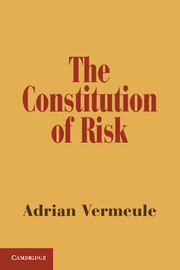Conclusion - Constitutional Rulemaking Without a Style
Published online by Cambridge University Press: 05 June 2014
Summary
At the end of Chapter 1, I attempted to put precautionary constitutionalism in its best light. On the precautionary approach, constitutional rules should build in redundant and robust safeguards against the risks that officials will predictably abuse their power and discretion, and that institutions will predictably attempt to expand their power. Safeguards are necessary because once abuses occur it may be too late to do anything about it; in the extreme, abuses will immunize themselves from correction. Above all, constitutional rulemakers should attempt to limit the downside risks of politics, ensuring that worst-case scenarios do not come to pass. Eschewing attempts to make a constitution that does good or promotes justice, they should limit themselves to preventing abuses and to limiting the possibility that officials will exploit their positions in ways that reduce the welfare or compromise the liberty of the whole polity.
This is a venerable vision of the proper aims and goals of constitutional law. It has been advocated by a series of impressive minds in many contexts, ranging from the founding era to modern legal and political theory, especially liberal constitutional theory. It is highly plausible on its face; in many settings in law and elsewhere, limiting the downside risks of choices is a sensible strategy, and aiming for too much can produce serious blunders. If the precautionary approach to constitutionalism is systematically mistaken, it is not trivially mistaken, nor is it fallacious in any simple way.
- Type
- Chapter
- Information
- The Constitution of Risk , pp. 186 - 192Publisher: Cambridge University PressPrint publication year: 2013
- 1
- Cited by



